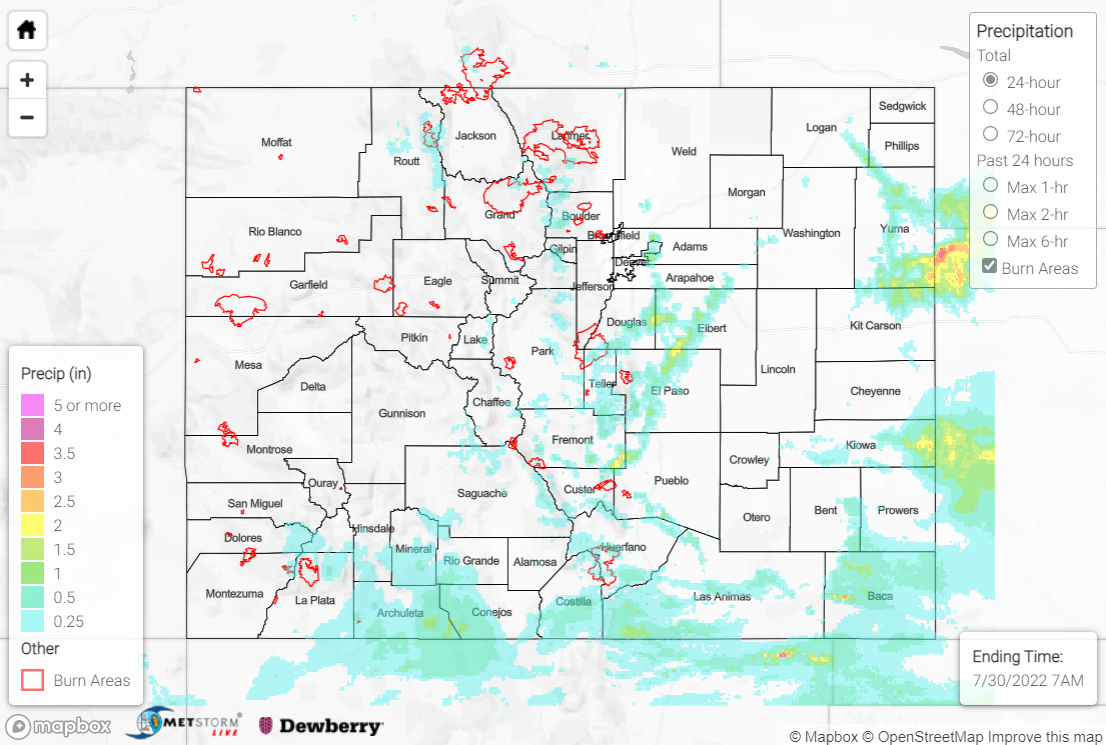Issue Date: Tuesday, August 2nd, 2022
Issue Time: 11:15 AM MDT
Summary:
Monday saw showers and storms mostly limited to the high elevations, with the heaviest rain falling across the mountains in central and southern portions of the state.
From the Central Mountains southeastward across the Southeast Mountains, QPE data suggests localized amounts up to 2” occurred. Flash Flood Warnings were issued for the Decker burn scar, Hayden Pass burn scar (2016), and Spring Creek burn scar, but no flooding was reported. A Flash Flood Warning, with no flooding reported, was also issued for northwest Gunnison and west-central Pitkin Counties. Notable rainfall observations in this region include 1.20” near Independence Pass, 1.06” near Breckenridge, 0.90” near Medano Pass, and 0.80” near Fort Garland.
Farther southwest across the San Juan Mountains, QPE data suggests 0.50-1.00” of rain was observed, but these amounts are likely underestimated as the Grand Junction radar remained offline yesterday. A Flash Flood Warning and Flood Advisory were issued for northwest Archuleta, south-central Hinsdale, and east-central La Plata Counties, with a debris flow reported across County Road 501. State Highway 114 was also reported as closed due to flooding approximately 12 miles west-northwest of Saguache. Notable rainfall observations in the San Juans include 1.95” near Durango and 1.82” near Rico.
Lighter precipitation was observed across the Northern Mountains and northern Front Range, where no flooding was reported but Flood Advisories were issued for both the East Troublesome and Cameron Peak burn scars. QPE data suggests amounts of up to 0.50”, with an automated gauge north of Hot Sulphur Springs measuring 0.35”.
If you observe flooding in your area, remember to use the “Report a Flood” page to make any flood reports when you can safely do so. For precipitation estimates in our area, check out the map below.



